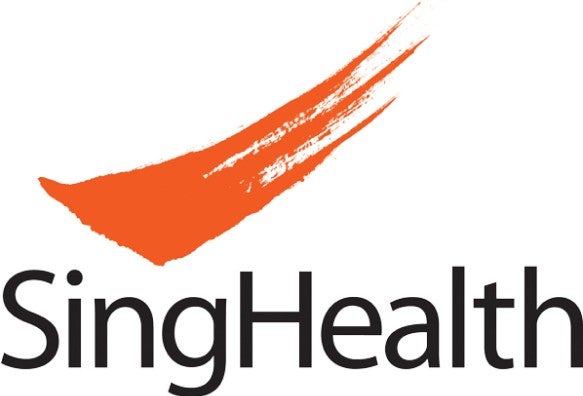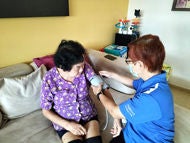What is - Epilepsy
Epilepsy - What it is
Epilepsy is a medical condition where a patient has a predisposition to having recurrent seizures. A seizure is an abnormal electrical discharge of a group of brain cells. It can cause different symptoms, depending on the location of the seizure and the spread of the electrical activity through the brain.
Under normal circumstances, the brain transmits electrical signals via brain cells known as neurons. These neurons work together to control and regulate motor movements, sensations, thoughts and emotions.
Occasionally, there is an abnormal electrical discharge in a group of neurons, which may spread to other areas of the normal brain, giving rise to fits, otherwise known as seizures. A person with predisposition to recurrent seizures has a diagnosis of epilepsy.
How prevalent are epilepsy and seizures?
About 0.5 - 1% of the population have had, or will have a seizure at some point in their lives. Epilepsy can develop at any time, but many new cases begin in childhood, particularly in early childhood and around the time of adolescence.
What are the types of epilepsy?
Epilepsy can be classified into different types based on where the seizures begin in the brain and how they present. The main types include:
- Focal epilepsy: Patients who have a high risk of recurrent seizures arising from one specific part of the brain may be diagnosed to have focal epilepsy. It may result in sensory, motor or autonomic disturbances and the seizures usually affect only one part of the body. The patient may be conscious or unconscious.
Types of focal seizures that may lead to the diagnosis of focal epilepsy include:
o Focal aware seizures: The person remains conscious and aware. Symptoms may include unusual sensations, such as changes in taste, smell or vision and involuntary movements.
o Focal impaired awareness seizures: Consciousness is altered or lost. The individual may appear confused, perform repetitive movements (automatisms) and have no memory of the event.
o Focal to bilateral tonic-clonic seizures: Seizure activity starts in one area and spreads to both hemispheres, leading to convulsions and loss of consciousness.
Specific types of focal seizures include:
o Temporal lobe seizures: Often involve emotional disturbances, déjà vu sensations and automatisms.
o Frontal lobe seizures: May cause sudden movements, abnormal posturing and speech disturbances.
o Occipital lobe seizures: Can result in visual hallucinations or temporary vision loss.
o Parietal lobe seizures: Might produce sensory disturbances such as tingling or numbness.
- Generalised epilepsy: Seizures affect both sides of the brain from the start, or may begin as a focal seizure and spread to the whole brain. They usually involve loss of consciousness lasting 30 seconds to 5 minutes, with or without rhythmic muscle jerking. Seizures may also cause tongue biting, incontinence and difficulty in breathing.
o Absence seizures: Brief lapses in awareness, often with staring and subtle movements like eye blinking. Common in children.
o Tonic-clonic seizures: Involve muscle stiffening (tonic phase) followed by rhythmic jerking (clonic phase). May cause tongue biting, incontinence and breathing difficulties.
o Myoclonic seizures: Sudden, brief muscle jerks affecting parts of or the entire body.
o Clonic seizures: Repetitive, rhythmic muscle jerking, typically affecting the neck, face and arms.
o Tonic seizures: Muscle stiffening without rhythmic jerking, often leading to falls.
o Atonic seizures: Sudden loss of muscle tone, causing the person to collapse.
- Rarer forms of epilepsy:
o Combined generalised and focal epilepsy: A person may experience both types of seizures.
o Unknown type epilepsy: The origin of the seizures is not clearly known or observed.
Symptoms of Epilepsy
What are the symptoms of epilepsy?
Epilepsy presents with a wide range of symptoms, which may vary depending on the type of seizure and the part of the brain affected. Common symptoms include:
- Temporary confusion
- Staring spells
- Uncontrollable jerking movements of the arms or legs
- Loss of consciousness or awareness
- Sudden fear, anxiety or déjà vu
- Changes in sensation such as smell, taste or touch
- Stiffening of the body
- Repeated twitching or movements that may appear purposeful
- Unusual behaviour such as lip smacking or picking at clothes
- Temporary inability to respond or communicate
When should you seek emergency treatment for epilepsy?
Call 995 or go to the Emergency Department immediately if:
- The person has repeated seizures without regaining consciousness in between
- The seizure lasts longer than usual for that person
- The seizure lasts more than five minutes
- It is the person’s first seizure
- The person sustains an injury during the seizure or the seizure occurs in water
- The person is pregnant
- The person has difficulty breathing after the seizure is over
These situations indicate a serious seizure and require urgent medical attention.
Epilepsy - How to prevent
How can you reduce the risk of seizures?
The risk of seizures in epilepsy can be reduced by:
- Taking prescribed anti-epileptic medications regularly
- Avoiding over-consumption of alcohol/alcohol binges
- Seeking early treatment for illness and fever
- Reducing stress levels
- Getting sufficient sleep and rest
How can you prevent complications of seizures in epilepsy?
Prevent complications of seizures by avoiding the following:
- Swimming unsupervised or in open waters
- Activities at height
- Bathing in a bathtub
- Activities involving open fire and hot surfaces
- Activities involving heavy machinery and firearms
- Driving - seek the advice of your doctor
Epilepsy - Causes and Risk Factors
What causes epilepsy?
In about two thirds of all cases, there is no single cause that can be found. However, causes have been attributed to damage of the nerve cells in the brain which leads to electrical disturbances. They include:
- Head trauma: A serious injury to the head, particularly one involving loss of consciousness or internal bleeding, may damage brain tissue and trigger seizures. This is a common cause of epilepsy in young adults and individuals involved in accidents or contact sports.
- Brain tumours: Tumours in the brain can disrupt normal neural activity by pressing on surrounding tissues or altering electrical signalling. Both benign and malignant tumours have been linked to the onset of seizures.
- Stroke: A stroke, which reduces or blocks blood flow to the brain, can result in permanent damage to brain tissue. The scarring that follows may become a focus for epileptic activity, particularly in older adults.
- Poisoning: Exposure to toxic substances such as lead, alcohol or carbon monoxide may damage the brain and provoke seizures. In some cases, epilepsy may develop after repeated or prolonged exposure.
- Infections: Infections that affect the brain, including meningitis, encephalitis, mumps and measles, can lead to inflammation and scarring. These changes may disrupt the brain’s electrical activity and increase the risk of seizures.
- Congenital brain malformations: Some individuals are born with abnormalities in brain structure, such as cortical dysplasia. These developmental issues may interfere with normal electrical activity and lead to early-onset epilepsy.
- Genetic conditions: Certain genetic disorders, such as tuberous sclerosis or neurofibromatosis, are associated with a higher risk of epilepsy. In some cases, epilepsy itself may be inherited through genetic mutations that affect brain function.
- Metabolic or biochemical disorders: Conditions that affect the body's ability to regulate substances such as glucose or electrolytes may trigger seizures. Examples include very low blood sugar, hyponatraemia or inherited metabolic diseases.
- Autoimmune conditions: Autoimmune epilepsy occurs when the body's immune system mistakenly attacks healthy brain tissue. This may lead to inflammation and recurring seizures, even in the absence of a structural brain lesion.
- Perinatal injury: Birth complications such as prolonged labour, lack of oxygen or traumatic delivery may injure the infant's brain. These early injuries can increase the risk of developing epilepsy later in life.
What are the risk factors of epilepsy?
While epilepsy can affect people of any age, certain conditions or life events may increase the risk:
- Family history: Individuals with a close relative who has epilepsy may have a higher genetic predisposition to the condition.
- Seizures during childhood: Febrile seizures related to high fevers in children are usually harmless, but the risk of later epilepsy may rise if the seizures are prolonged, occur alongside other neurological conditions or there is a family history of epilepsy.
- Neurodegenerative diseases: Disorders such as dementia, which are more common in older adults, have been associated with an increased risk of developing epilepsy.
- Brain infections: Infections like meningitis or encephalitis, which result in inflammation of the brain or spinal cord, may increase the likelihood of seizures.
- Head trauma: Injuries to the head, particularly those involving loss of consciousness or bleeding within the brain, can lead to epilepsy.
- Stroke and vascular disorders: Conditions that affect blood flow to the brain, including stroke, can cause damage that may trigger seizures.
Diagnosis of Epilepsy
How is epilepsy diagnosed?
Epilepsy is diagnosed based on information of events that happened during the attack. Tests may be ordered to confirm the diagnosis, type and cause.
Electroencephalogram (EEG)
This test records the electrical activity of the brain through electrodes attached to the patient’s head. The patient may be asked to perform simple tasks during the EEG recording.
Computerised tomography (CT) and magnetic resonance imaging (MRI)
Either form of imaging may be required to look for structural causes of seizures.
Treatment for Epilepsy
How is epilepsy treated?
Epilepsy affects people in different ways. Your doctor will recommend a treatment plan based on your age, symptoms and other medical conditions.
1. Anti-Seizure Medications (ASMs)
ASMs are the most common treatment for epilepsy. Although they do not cure epilepsy, they prevent recurrent seizures. The goal of treatment is to control the frequency and severity of the seizure without burdening the patients with unpleasant side effects. There are a number of ASMs available but different ASMs control different types of seizures. The effectiveness of ASMs vary from person to person. Thus, the specialist will choose the appropriate ASM AED based on the diagnosis of the patient.
Most patients will be treated with only one drug. If the drug is ineffective, the doctor may increase the dose until the seizures are controlled or the side effects are intolerable. If the seizures still persist, the doctor may substitute with or prescribe another ASMs.
Side effects of ASMs
All drugs can cause side effects, however reactions of the individual to the medications may vary from person to person. Other common side effects may include double vision, unsteadiness and headaches. These effects can be alleviated when the dose of ASM is reduced. However, most people may develop tolerance to these side effects after taking the ASM for some time.
Most ASMs can cause drowsiness and dizziness, so it is important that you do not operate any heavy machinery after taking ASMs.
If you experience any allergy such as rashes, mouth ulcers, swelling of the eye/lips or breathlessness, inform the doctor immediately.
Monitoring of ASMs
This involves monitoring of seizure frequency and side effects of the treatment. Thus, patients need to maintain a seizure diary and communicate with the physician at each visit. Blood tests are required sometimes to monitor the liver function, components of the blood and drug level.
ASMs and compliance
Compliance is defined as taking the prescribed medication according to the instructions given. This will help to prevent recurrent seizures and maintain a certain concentration in your blood.
- Take your medication regularly as missing a dose can lead to a seizure.
- If you miss a dose, take it as soon as you remember.
- DO NOT take the missed dose if it is too near the next dose, instead just skip the dose and continue with your next dose.
- DO NOT double the dose, inform your doctor if you miss a dose.
- DO NOT share your medication with others.
- Avoid taking alcohol with your medication. Alcohol will increase the sedative effect of ASMs and may interfere with the metabolism of some ASMs.
Stopping ASMs
Certain patients may need to take ASMs for life. However, if a patient
- Has been seizure-free for 2 – 5 years;
- Has no underlying structural lesion;
- Does not have a genetic condition;
- Has normal EEG and normal results on neurological examination, the doctor may consider tapering down the dosages and discontinuing the ASMs.
A decision on whether to stop the ASMs should be discussed with the neurologist after weighing the risks. These include the possibility of having another seizure after the medication has been withdrawn.
2. Surgery for epilepsy
Patients who have seizures that are not controlled despite adequate trials of ASMs are candidates for surgery. The reasons for considering this alternative are the prospects of facing a lifetime of ineffective drug therapies and severely compromised social, intellectual and professional functioning resulting from repeated seizures.
However, like all medical treatments, surgery is not suitable for everyone. Thus, it is important to discuss the risks and outcome of the surgery with the neurologist and neurosurgeon.
3. Avoiding trigger factors
In many patients, the seizure frequency can be reduced by avoiding certain trigger factors as follows:
Alcohol
Drugs that act on the brain, like anti-epileptic medication, are likely to be more sensitive to the effects of alcohol. Alcohol can make seizures more likely to occur. In addition, the unwanted effects of the alcohol will be increased and it may worsen the side effects of anti-epileptic medications. Excessive or heavy drinking is likely to increase the risks of seizures and lead to other health problems.
Stress
Stress, lack of sleep, depression and mood swings may increase the seizure frequency. Counselling, relaxation exercise, stress management and/or aromatherapy may help to reduce stress and thus prevent a seizure from occurring.
Television, computers, video games
For some people with epilepsy, seizures can be triggered off by flickering or changing patterns of lights such as watching television. Chances of occurrences may increase if you get too close to the television screen or when you are tired.
- If you are affected or are feeling uncomfortable (e.g. dizziness, blurred vision, muscle twitching), turn away from the source of flickering light and cover one eye with your hand until the lights stop flashing.
- Always make sure you get regular breaks away from the screen and watch the television in a well-lit room, about 2.5m or more from the television.
- Do not watch if the picture becomes unstable because of poor reception.
Complementary Treatment
There are various types of complementary treatments, which may or may not help in epilepsy. To date, there is no scientific evidence to suggest that any type of complementary treatment is successful in controlling or ‘curing’ epilepsy.
It is, therefore, important to discuss with your doctor first before attempting any form of complementary treatment. In addition, it is not advisable to reduce or stop any AED without consulting your doctor
What should you do if you witness a seizure?
The first and most important step is to STAY CALM if you witness a seizure. Next, take note of the following:
- Time the seizure
- Place something soft under the head and loosen any tight neckwear
- Remove any sharp or hard objects that may be nearby
- Turn the person on his/her left side (recovery position) if he/she vomits or when the seizure is over
- Stay with the person for at least 15 - 20 minutes after the seizure to ensure the breathing has normalised and he/she has regained consciousness.
- DO NOT put any object in the person’s mouth
- DO NOT restrain the person
- DO NOT move the person unless he/she is in danger (e.g. in the middle of the road)
- DO NOT apply CPR or mouth-to-mouth resuscitation until the jerking has stopped (if resuscitation is necessary)
FAQs on Epilepsy
Epilepsy - Other Information
Is there a cure for epilepsy?
Some forms of epilepsy occur only in childhood and the person may outgrow the seizures. Medication can only help to control seizures. Sometimes, surgery to remove the part of the brain in which the seizures originate can produce a complete and permanent stop to seizures.
Can people with epilepsy live normal lives?
Yes. Most people with epilepsy can work, study, and take part in social activities like anyone else. However, some lifestyle changes and safety precautions may be necessary.
Can a person with epilepsy drive in Singapore?
Under the Singapore Road Traffic Act, persons with epilepsy are not allowed to drive. Individuals must inform the authorities of their condition when applying for a licence. It is best to discuss further with a physician.
Are people with epilepsy allowed to work?
Yes, many hold full-time jobs. However, roles involving driving, working at heights, operating heavy machinery or handling hazardous materials are not recommended due to safety risks.
Employees are encouraged to disclose their condition, especially if seizures may affect job performance or safety. However, it is advisable not to over-emphasise the condition to avoid misunderstanding or prejudice.
What safety measures should be taken at home?
- Showers are safer than baths. If bathing, keep water levels low and inform someone. Keep the door unlocked.
- Store fragile items in closed cabinets to avoid injury.
- Use a microwave rather than open flames or stovetops.
- Consider using an alarm device if living alone or needing help in an emergency.
Can people with epilepsy exercise or play sports?
Yes. Exercise is beneficial but should be done with caution. Those with active seizures should not swim alone. Contact sports and high-risk activities like mountain climbing, scuba diving or boxing are discouraged. A protective helmet may be helpful for those prone to falls.
Can people with epilepsy travel?
Yes. Travel is possible with proper preparation:Bring enough medication for the entire trip, with extra if possible.
- Carry medicine in hand luggage in original packaging.
- Request a doctor’s memo with diagnosis and treatment details.
- Know the generic names of your medications.
- Adjust medication timing for time zone changes with your doctor’s guidance.
- Avoid sleep deprivation, which may trigger seizures.
Can women with epilepsy have children safely?
Yes, women with epilepsy can become pregnant, have healthy children and participate fully in parenthood. However, pregnancy is considered higher risk due to seizures and medication. It is important to consult a doctor before trying to conceive.
Using one medication is generally safer than multiple drugs during pregnancy, and folic acid supplements are often recommended. Breastfeeding is usually safe, though caution is advised with certain medications such as phenobarbitone.
Does epilepsy medication affect contraception?
Some epilepsy medications may reduce the effectiveness of birth control pills, so alternative contraception may be needed.
How can you manage epilepsy and seizures?
Keep a seizure diary to record the number, type and triggers of seizures. This will help your doctors assess the effectiveness of medications.
Support for Seizures and Epilepsy
- Singapore Epilepsy Foundation
The Singapore Epilepsy Foundation provides support for epilepsy patients and their caregivers, and increases public awareness of epilepsy. For more information, contact 6334 4302 or visit www.epilepsy.com.sg. - Epilepsy Care Group (Singapore)
The Epilepsy Care Group (Singapore) provides education and counseling for epilepsy patients and their caregivers, while promoting public awareness. To find out more, contact 6358 0566 or visit www.epilepsycare.org.
Download the Seizures and Epilepsy brochure.
The information provided is not intended as medical advice. Terms of use. Information provided by SingHealth.
Condition Treated At
Department
Neurology
Department
Neurology
Department
NNI @CGH
Department
Neuroscience
Department
General Medicine
Get to know our doctors at SingHealth Hospitals in Singapore.
Get to know our doctors at SingHealth Hospitals in Singapore. here.





















